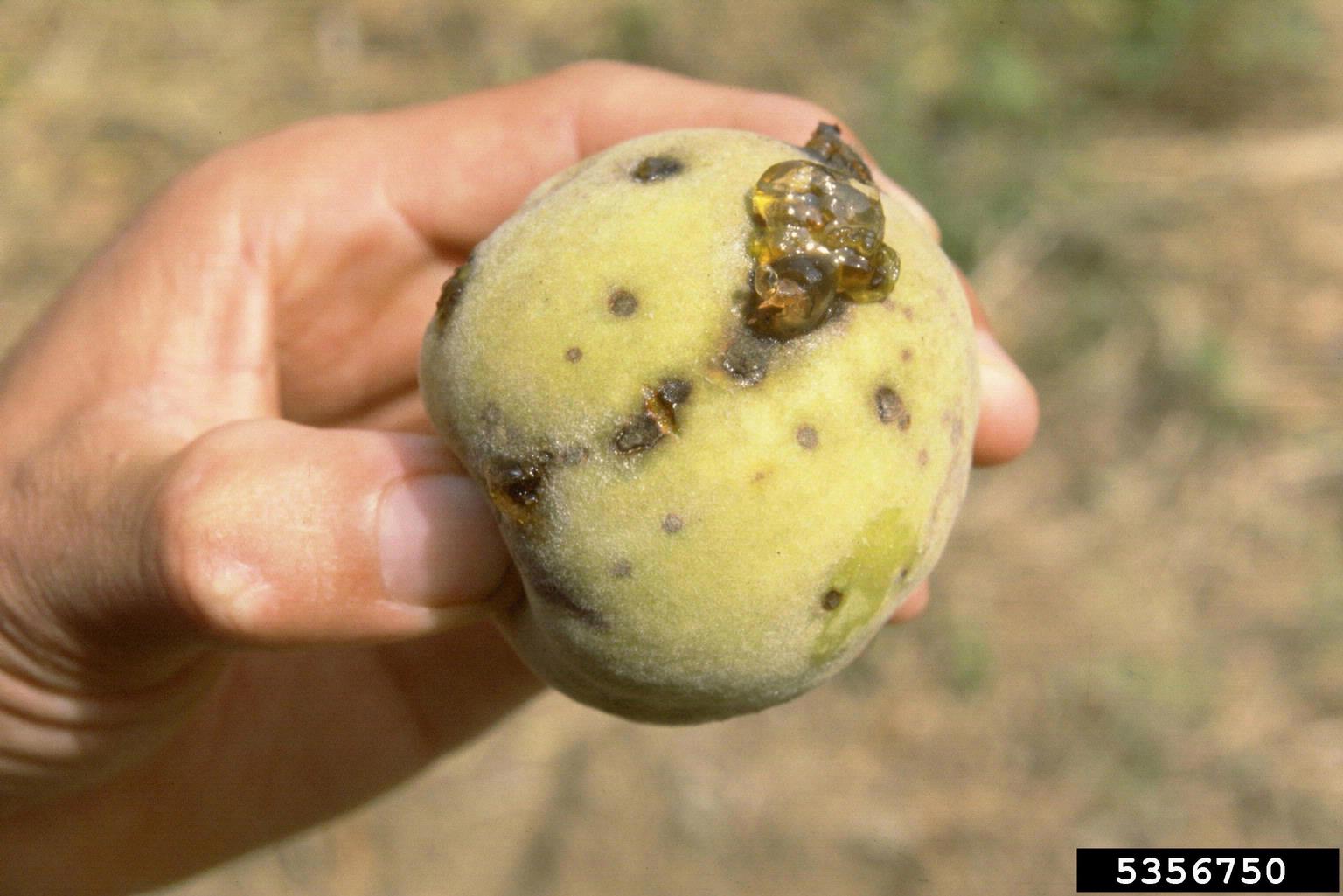Peach Shot Hole Fungus: Recognizing Shot Hole Peach Symptoms


Shot hole is a disease affecting several fruit trees, including peaches. It leads to lesions on leaves and eventual leaf drop, and it can sometimes cause unsightly lesions on fruits. But how do you go about treating peach shot hole disease? Keep reading to learn more about what causes peach shot hole and how to prevent and treat it.
What Causes Peach Shot Hole Disease?
Peach shot hole, sometimes also called coryneum blight, is caused by a fungus called Wilsonomyces carpophilus. The most common symptoms of peach shot hole fungus are lesions on the twigs, buds, and leaves. These lesions start out as small, dark purple spots. Over time, these spots spread and turn brown, usually with a purple border. Eventually, dark bumps will form in the center of each lesion – these release spores that further spread the disease. Infected buds turn dark brown to black and shiny with gum. On infected leaves, the center of these lesions will often fall out, creating the “shot hole” appearance that earns the disease its name. In wet weather, the fungus will sometimes spread to the fruits, where it develops dark brown and purple spots on the skin and hard, corky areas in the flesh underneath.
Treating Peach Shot Hole
Peach shot hole fungus overwinters in old lesions and spreads its spores in damp weather, especially with splashing water. The most common method of treating peach shot hole is the spraying of fungicide in the autumn just after leaf drop, or in the spring just before budbreak. If peach shot hole has been known to be a problem in past seasons, it’s a good idea to prune out and destroy infected wood. Try to keep trees dry, and never irrigate in a way that wets the leaves. For organic treatments, zinc sulfate and copper sprays have been shown to be effective.
Gardening tips, videos, info and more delivered right to your inbox!
Sign up for the Gardening Know How newsletter today and receive a free copy of our e-book "How to Grow Delicious Tomatoes".

The only child of a horticulturist and an English teacher, Liz Baessler was destined to become a gardening editor. She has been with Gardening Know how since 2015, and a Senior Editor since 2020. She holds a BA in English from Brandeis University and an MA in English from the University of Geneva, Switzerland. After years of gardening in containers and community garden plots, she finally has a backyard of her own, which she is systematically filling with vegetables and flowers.
-
 Grow ‘Karl Rosenfield’ Peony Plants For The Ultimate Frilly Border Beauties And Cut Flowers
Grow ‘Karl Rosenfield’ Peony Plants For The Ultimate Frilly Border Beauties And Cut FlowersFor frilly double magenta peony petals infused with a heady fragrance, grow ‘Karl Rosenfield’ peony plants. Here’s how to cultivate the ultimate plushy blooms
By Tonya Barnett
-
 10 Common Composting Problems That Can Spoil Your Garden Gold – Plus Easy Fixes
10 Common Composting Problems That Can Spoil Your Garden Gold – Plus Easy FixesLearn how to troubleshoot common composting issues before they ruin your stash – from bad smells and bugs to materials not breaking down as they should.
By Susan Albert